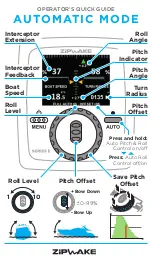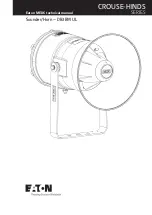
are displayed in the "Result" bar at the right side of the screen. By default, it is
intended for the fast edge signal.
•
Click or tap the fourth icon, and then one falling edge of the signal is displayed
automatically on the screen. Meanwhile, the system will make measurements for
the "Fall time" of the currently displayed falling edge. The measurement results
are displayed in the "Result" bar at the right side of the screen. By default, it is
intended for the fast edge signal.
•
Click or tap the fifth icon to cancel the auto setting and recovers to the
parameter settings prior to clicking or tapping Auto.
•
Click or tap the sixth icon to enter the Auto Config sub-menu under the Utility
menu. For details, please refer to
.
TIP
The waveform auto setting function requires that the frequency of the signal should be greater
than or equal to 35 Hz, the amplitude greater than or equal to 5 mV. If not meeting the
conditions, the waveform auto setting function may be invalid.
10.6
Cursor Measurements
Cursor measurement can measure the X axis values (e.g. Time) and Y axis values (e.g.
Voltage) of the selected waveform. Before making cursor measurements, connect the
signal to the oscilloscope to acquire stable display. All the parameters supported by
the "
" function can be measured with cursor measurement. The
cursor measurement function provides the following two cursors.
Figure 10.8 Cursor
•
X Cursor
X cursor is a vertical solid/dotted line that is used to make horizontal
adjustments. It can be used to measure time (s) and frequency (Hz).
Measurements
HDO1000 User Guide
148
Copyright ©RIGOL TECHNOLOGIES CO., LTD. All rights reserved.
















































